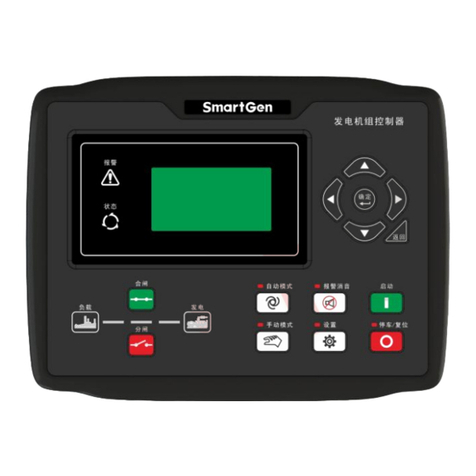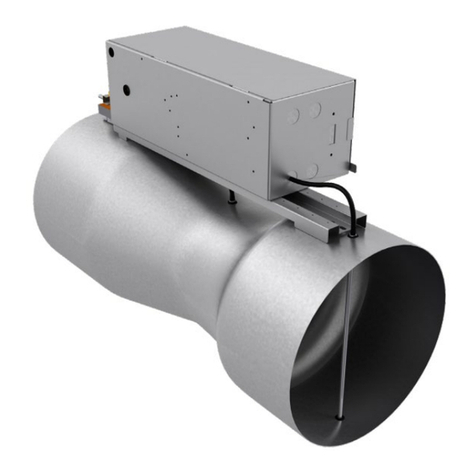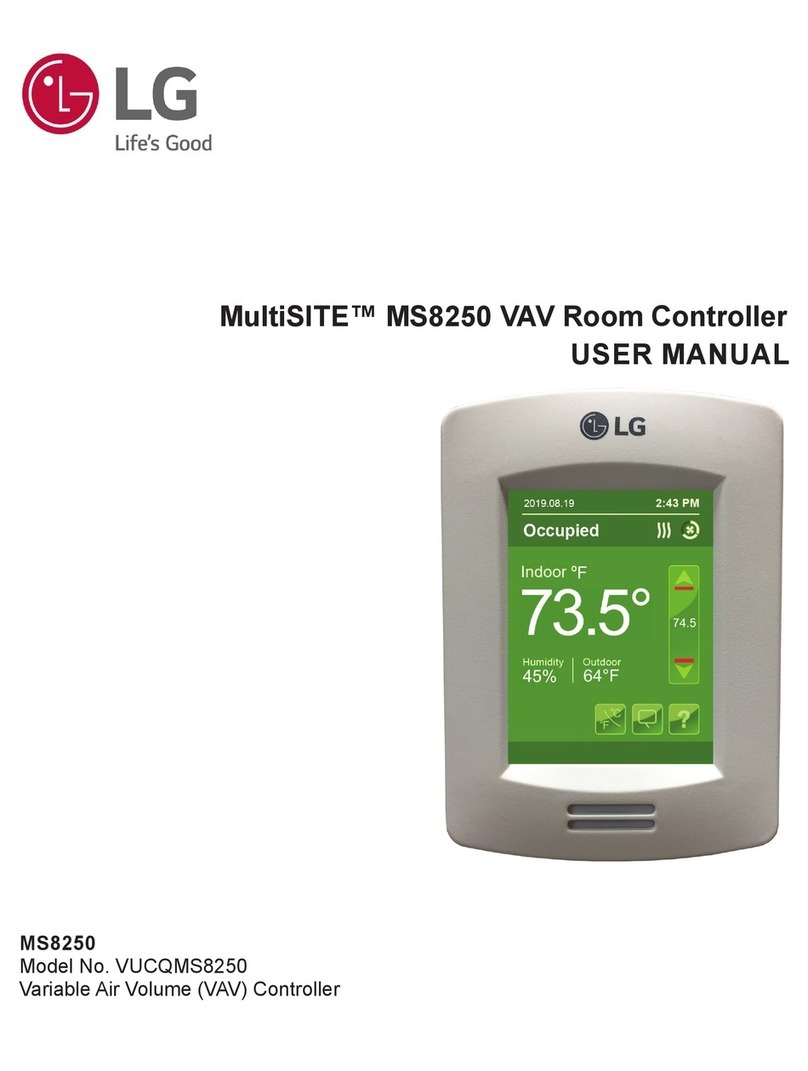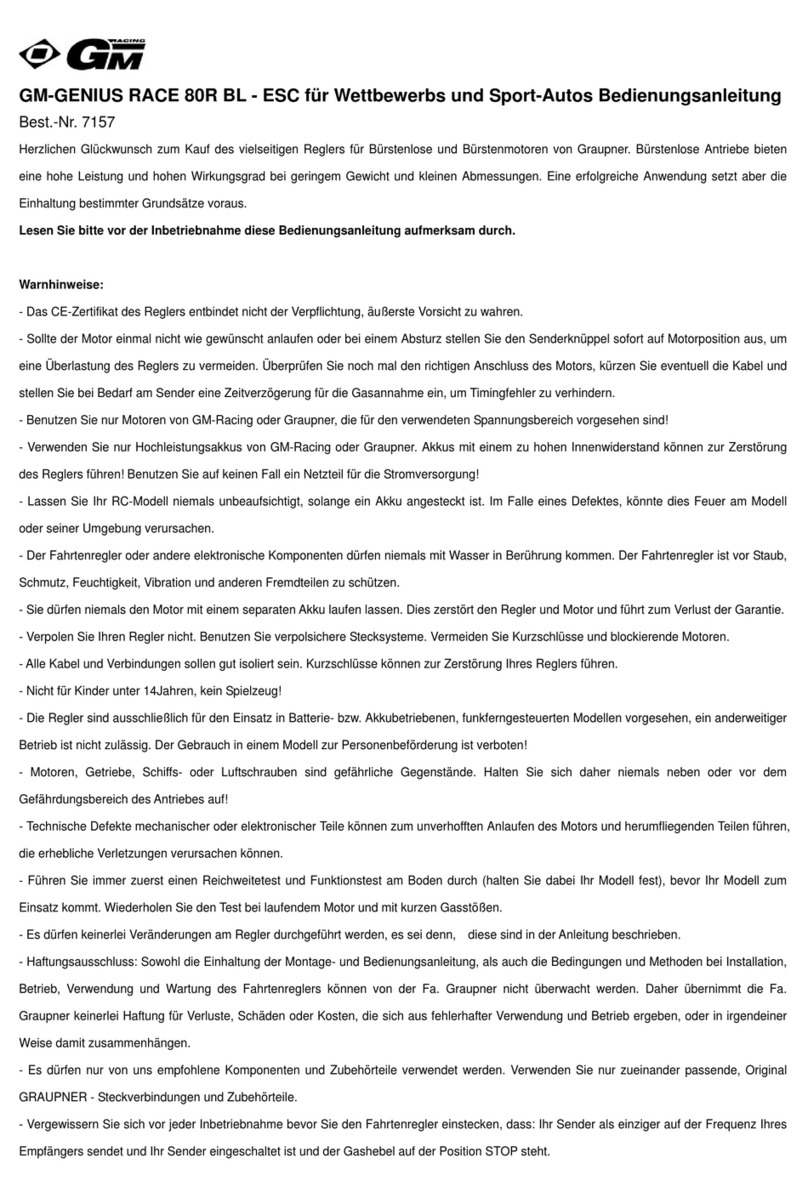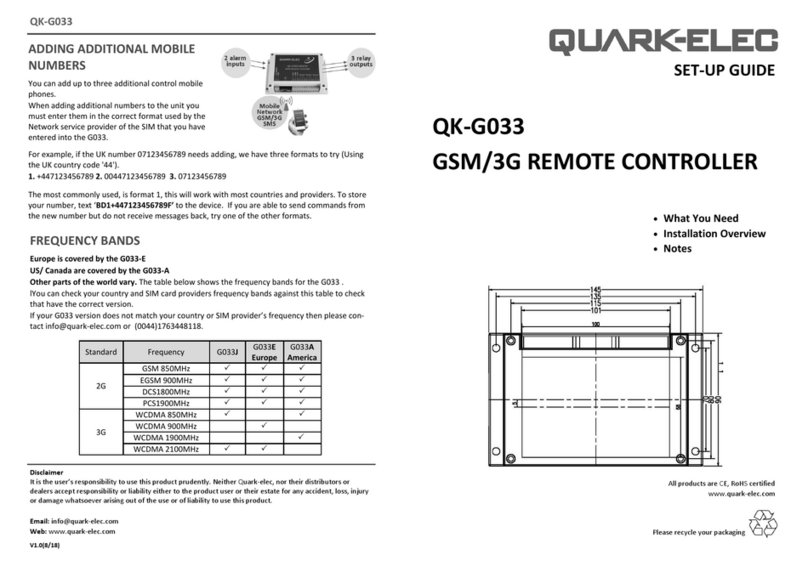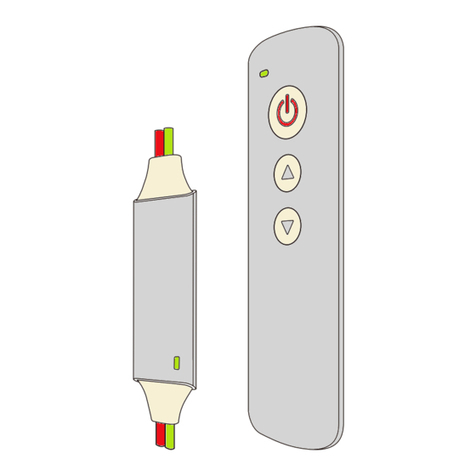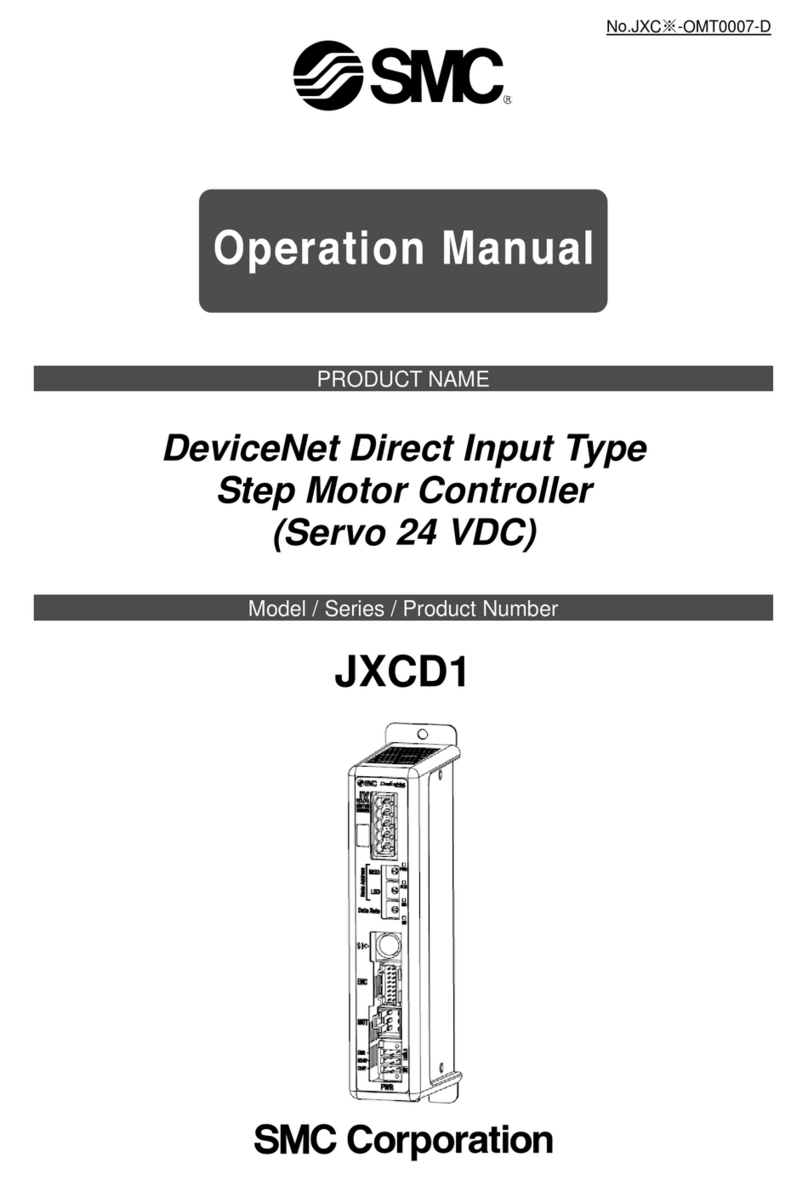ACTION ELECTRONICS P94 User manual

www.action-electronics.co.uk
C 2023 Action R/C Electronics
SCHEMATIC OF INSTALLATION IN TWIN-ENGINED MODEL
Type: Dual ESC and Mixer Module. Equivalent to two fully operational ESCs and a mixer, all in the same
case. Will suit most types of DC motor used in model boats, including 7+ pole types.brushed
No of channels required: 2
Motor voltage: 6v to 24v
Maximum continuous current rating: 20A per ESC
Modes: 4 different modes of operation, selectable by user via on-board 2-way DIL switches:
Mode 1: Dual electronic speed controllers - Each ESC works from a separate channel i.e. “Tank Steering”;
Mode 2: Dual thruster mode - Controls bow and stern thrusters. Skipper selects either Traverse (where
thrusters work in the same direction and slew the model sideways) or Spin (where the
thrusters work in opposite directions and spin the model on its own axis). Selection is done by
“blipping” the rudder stick hard over and letting it go straight away. Both thrusters are also
fully speed-controlled.
Mode 3: 0% - 100% Mixer. As Mode 4, except that inboard motor can be made to spin at full speed in
reverse sense on full rudder command i.e. you can spin the model on its axis.
Mode 4: 0% - 50% Mixer. Applies differential speed control to the motors automatically as a rudder
command is give. Adjustable from 0%, where there is no mixing of rudder and throttle signals,
up to 50%, where the inboard motor just stops at full rudder command.
Other facilities:
Failsafe..........................................................
Autoset..........................................................
ESCs shut down motors on loss of signal.
Central Motor & Rudder connections..............3-pin headers provided for connecting the steering servo and a
P94 automatically sets neutral position of throttle and steering
separate speed controller to operate a centre motor.
o ing “binding” or other setting up to don power up i.e. No
Adjustable thruster output............................ Allows the operation of commercial thrusters from higher-
voltage main batteries.
P94 DUAL ESC/MIXER MULTI CONTROLLER
CH1
CH2
BATT
Receiver
Steering Servo
ESC for motor on
Main battery
Main battery
Port Motor
centre shaft (if required)
(2 Channel Minimum)
01248 719353
Battery Eliminator (BEC)................................Built in 5V 2A (3A peak) battery eliminator
S
T
Stb’d Motor

P94 Dual ESC/Mixer Multi-controller
Installing the P94
Because of the high power of the P94 Multi-controller, care should be paid to the installation of the unit.
Each ESC circuit can deliver 20A continuously and the wiring installation should be designed with that in
mind.
Fig #4 shows a basic installation. The length of all wires should be kept to an absolute minimum, but not to
The fuse must be sized to be as small as possible without causing nuisance tripping. A 40A fuse (maximum)
should be used to protect the unit.
If more than one battery is being used for the installation, they should be connected in parallel. This is best
done by using a P103 Parallel Power Board. This will handle up to 15v @ 20A and prevents any possibility
of one battery discharging into the other and causing damage or even fire to the wiring. See Fig #6. If you
are using >15v then first connect the two battery positive terminals together and the two battery negative
terminals together and then connect each of the joined pairs to the P92 etc.
When connecting the motors, suitably rated cable must be used and the lengths kept as short as possible.
2
We recommend multi-strand cable of at least 2mm (16AWG). The wiring of the two motor connections is
reversed with respect to each other, so that they rotate in opposite directions when ahead or astern
commands are given. It is also recommended that the outputs from the ESCs are individually fused. P95
is ideal for this purpose; See Figs #1 & #2. Each fuse must be no more than 20A.
Terminal block TB1 is used for one motor or the bow thruster, and TB2 is used for the other motor or the
stern thrusters (depending on the operating mode). Do NOT allow the two heat-sink tabs to touch each
other or touch any other power wiring. Additional cooling in the form of extra heat-sinks or water-carrying
tubes can be fitted to the aluminium tabs, but they must remain electrically isolated from each other.
When connecting the receiver to other servos or speed controllers there are two “straight-through”
connections on the P94 in the form of 3-pin headers. See the Schematic Drawing on the Front Page of this
manual. These eliminate the need for Y-leads from the receiver outputs. H1 would be used conventionally
to connect the steering servo, while H2 will supply the throttle signal (unmixed) to a third electronic speed
controller e.g. for a central motor. Header pins H2 can also be used to connect a digital engine sound unit
to the system e.g. ACTion P1 0. The sound will then follow the throttle stick input and will not be affected 1
by any degree of mixing.
01248 719353
The latest version of P94 has a switch-mode voltage regulator, or Battery Eliminator Circuit (BEC) fitted.
This takes power from the main motor battery/batteries and reduces it to 5v to operate the logic circuit in
P94 and to feed the power to the receiver, also @ 5v. Unless you want to run the receiver from a
seperate battery (or the flylead from P92/P102/P107) then you MUST remove the red wires
from the two leads marked T and S. If you leave either of them connected then the receiver will be at
risk of serious damage due to being “fed” two different voltages at the same time. You can modify the
plugs easily like this:
2
1
3
Slightly lift tab
Bend and tape back RED lead
Withdraw RED (Positive) lead
Pointed blade
White/Yellow
ESC receiver lead
Red
Black
the extent that they are tight, a small amount of slack will reduce the risk of them coming loose in use.
C 2023 Action R/C Electronics

01248 719353
Important!
1. ALWAYS check your wiring before applying power to the circuit for the first time, and
ALWAYS turn off ALL power before you make ANY changes to connections or any adjustments to
switches etc. If you ignore this rule then you could cause damage to the unit.
2. Never work with a live battery in circuit, especially if the unit is out of its case. You risk
shorting out the copper tracks on the reverse of the PCB.
3. Turn on your transmitter before the receiver, and turn off the receiver before turning off the transmitter.
4. Always fit suppressor capacitors to your motors (ACTion can supply a suitable set of components).
5. When setting up Modes 3 and 4, first use the Tx Servo Reverse Switch if necessary so that the steering
servo operates the rudder(s) in the correct sense. Once you're satisfied with this, leave this switch alone
throughout the rest of the setting-up procedure. If you need to reverse the rotation of either motor then do
it by swapping over the two connections from the motor to the ESC terminals. If you find that the “wrong”
motor slows down when you apply a steering comm nd then simply swap over the two motors between a
terminals blocks TB1 and TB2.
6. If your transmitter has any form of inter-channel mixing on the steering and throttle channels, make
sure it is switched OFF for the operation of a model fitted with a P94. Also ensure that any servo throw
adjustment is set to 100% movement in both directions. See the manual for your radio for further
information.
Modes of operation
Mode 1: Dual ESC Mode (See Fig #6) Switch 1 = ON, Switch 2 = ON
Mode 2: Thruster Mode (See Fig #7) Switch 1 = ON, Switch 2 = OFF
As discussed earlier, P94 has four different modes of operation. These are selected with the small 2-way
switch which is situated on the circuit board just below the microprocessor chip. Each of the two switches
can be either ON or OFF. The unit is supplied in Mode 4 and the Mix control has been set to the optimum
position for this mode. You may need to adjust the trim lever on your Tx slightly to rudder ensure
t start together. hat the two motors exactly The indicator LEDs of P95/2 are very useful here.
The “Mix” knob controls the 'degree' of mixing. If you turn it all the way clockwise then the mixing
function in Modes 2-4 will be totally disabled. The following sections describe the four modes of operation,
in conjunction with Figs #6, 7 & 8. Note that the props are shown in outwards contra-rotating configuration
when viewed from the rear. If your model uses inward-turning props then set up the P94 as shown and, as a
last step, swap the connections between the P94 terminals and the motors to reverse their direction of rotation.
In this mode the system operates as two independent ESCs, each rated at 20A. This is frequently referred
to as “Tank Steering” as it mimics the controls used by the driver of a tracked vehicle to control its direction
and speed. Many boat modellers prefer this 'manual' mode of mixing twin motors, and it is also widely used
by builders of large-scale model tanks. In this mode there is no interaction between the two channels, and
the Mix control is not used.
This mode is intended to control combined bow and stern thrusters. The thrusters can be run in the same
direction to move the model sideways in the water (“slew”), or in opposite directions to rotate it around its
own axis (“spin”). The output from terminal block TB1 is used to drive the bow thruster while TB2 controls
the stern thruster. The thruster speed/direction channel is usually the LH Tx stick. Push it to the left for a
rotation/slew to Port and to the right for a Starboard rotation/slew.
The RH side-to-side stick is the main steering control for the model and it is also used to switch the
thrusters from Spin mode to Slew mode; the stick is “blipped” to the left with the thruster speed/direction
control in the neutral position. To switch from Slew to Spin, the stick is blipped to the right. Note that the
direction is only changed if the thruster speed control is at neutral (i.e. the thruster motors are not
running) and the control is blipped to the limit for less than about 1 second. If it is held over for 1 second
or more the direction is not changed. A P95/2 in the circuit will instantly show whether or not the directions
have changed by the colour of its LEDs. Practise before you first sail the model! The changeover will only
take effect when you apply an amount of thruster speed/direction i.e. it will not be indicated when you blip
the Select stick.
The Mix control can be used to set the maximum voltage for the thrusters. This means, for example, that
you can safely run 7.2v thruster units from 12v main motor drive batteries without causing them damage;
See Fig#3. To set the thruster voltage, turn R fully clockwise. Connect a digital volt-meter across the 7
brushes of the bow thruster motor; power the system up and move the thruster control to full speed (in
either direction). Hold it there while you adjust the Mix until the meter reads the rated voltage of the thruster.
Graupner thrusters units are generally 7.2v while the Robbe ones are generally 6v.and Raboesch
Mode 3: 100% Mixer (See Fig #8) Switch 1 = OFF, Switch 2 = ON
The 100% Mixer mode is a “W-tail” type mixer. If turning to starboard, the port motor is speeded up and
the starboard motor is slowed down. If turning to port the starboard motor is speeded up and the port
motor slowed down. This mode allows the motors to reverse direction under the control of the steering

Autoset operation - Overview
Your P94 is fitted with software which now includes full ACTion ‘Autoset’. This means that P94 will automatically
detect the positions of the transmitter throttle and rudder sticks when you switch on your system, and then lock
onto them as its own neutral positions for that sailing session. The effect of this is that you will not need to adjust
the transmitter trim levers (as with earlier versions of P94) in order to stop the motors at “dead stop” command
or to start them together when you apply some throttle. It also allows the user to operate P94 with the cheaper
2.4GHz systems which have non-standard neutral signal values. We strongly recommend the fitting of spring-
centring to the throttle stick of your transmitter; your radio dealer can advise on obtaining the requisite parts or
you can contact the RC manufacturer’s local service agent to have the job done for you.
NB THIS UNIT WILL NOT OPERATE WITH FUTABA 6J OR 2.4ghz SKYSPORT RADIOS. These sets have a different
way of transmitting their signals which cannot be read by P94. The older Futaba 6EX 2.4GHz sets and the 40MHz
Skysports are both OK.
Since introducing the Autoset software to P94 it has been apparent that the back-EMF caused by the two motors
suddenly changing direction can, in some extreme circumstances, cause the power supply to the receiver to
momentarily dip below its critical value. While this has no adverse effect on the receiver it does mean that the
P94 software “thinks” that the receiver has been switched off and then back on again. It therefore goes through
its full Autoset routine all over again. Unless the transmitter sticks are in the same positions as they were when
you first switched on then this will change the neutral stick positions and make the model difficult to control.
To avoid this:
Only move the sticks gently and smoothly, especially in Mode 3 where the motors change direction very quickly
between neutral and full steering commands. Avoid just letting go of the sticks and allowing them to spring back
to neutral, or suddenly applying full throttle in one direction from either neutral or the opposite direction;
If you still have problems then we can supply a DIY-fit microprocessor with non-Autoset software. This simply
replaces the plug-in microprocessor already fitted and will be free of charge if you return the original chip
afterwards. Illustrated instructions are included to help you do what is a very straightforward job. Contact ACTion
for details.
Autoset operation - Procedure
Follow the procedure shown in the diagrams below. Note that P94 will Autoset every time you switch on the radio;
it isn’t a one-off “binding” or “setting up” procedure. It is important not to move the transmitter sticks while the
autoset is running or the system may not work correctly. After a few seconds - depending on how long your
receiver and transmitter take to ‘bind’ - the relays will click rapidly several times and it is then OK to operate the
transmitter as normal. If the model goes out of range then P94 will stop both of the motors, but when the model
comes back into range then P94 will resume with the same neutral positions that it had when you first switched
on i.e. It will NOT autoset again.
Mode 4: 50% Mixer (See Fig #8) Switch 1 = OFF, Switch 2 = OFF
command. The amount by which the motors change speed is controlled by the Mix knob; turn it anti-clockwise
to increase the degree of opposite rotation of the inboard motor at full rudder command. Note that if you
apply a rudder command any throttle then the motors will go to full speed in forward+reverse; this without
allows you to spin the model on its axis with no forward speed.
The main throttle output from the receiver connects to P94 lead marked “T” with the steering output
connected to lead marked “S”. The rudder servo itself should be connected to header pins H1. If the model
has a three-motor setup, the ESC to drive the third motor should be connected to header pins H2. Note
that both of these connections are made with the Black (negative) wire in the plug onto the outer pins i.e.
nearest the edge of the circuit board. 100% mixing is more suited to slow moving vessels that require the
maximum degree of manoeuverability e.g. tugs, ferries, fishing vessels and other work-boats.
The 50% Mixer mode is more complex than the 100% mixing function, and is more suited to faster
vessels e.g. fast luxury cruisers, MTBs and modern lifeboats. In this mode, the outer motor in the turn is
not speeded up (unlike the 100% mix). The inner motor is slowed down - the amount by which is determined by
the rudder input, but it is not allowed to change direction unless reverse throttle command is given. The sensitivity
of the system to the rudder input is set using the Mix control; turn it anti-clockwise to increase the amount of
mixing. The connections for Mode 4 are the same as for Mode 3. Note that rudder command with no throttle will
NOT start the motors in this mode.
ON
ON
12
“Click” “Click”
“Click” “Click”
Switch ON transmitter Switch ON / connect
4
After relays stop clicking
Wait until relays ”click” rapidly
OK to move sticks
6v to 12v BATTERY
+ve -ve
main battery
01248 719353
C 2023 Action R/C Electronics

FIG #2: DUAL THRUSTER CONNECTIONS (MODE 2)
(Power connections omitted for clarity)
BOW
Commercial thruster units
STERN
Suppressor
ACTion RFI
Kits
FIG #1: TYPICAL TWIN MOTOR CONNECTIONS (MODES 1, 3 &4)
Mix control - See diagrams above
thruster e.g. Graupner
movement to thruster
clockwise
turned fully
Start with Mix
and adjust Mix slowly
= 7.2v, Robbe = 6v
that specified for the
until Voltage reaches
Apply full stick
0 - 20V across thruster
read 0v - 20v
set scale to
motor brushes;
multimeter
Connect digital
ACTion RFI Suppressor Kit
(Power connections omitted for clarity)
when the main drive motors rotate in opposite direction e.g. At Full Ahead speed.
When connected as shown, the LEDs will both glow the same colour
MOTOR #2
MOTOR #1
"+ve"
"+ve"
STARBOARD
PORT
ADJUSTING Mix control where
Main battery voltage is greater
"+ve"
"+ve"
ACTion P95/2 Indicator
Fuse Board
ACTion P95/2 Indicator
Fuse Board
C 2023 Action R/C Electronics Original drawing by Dave Milbourn
P94
Adjust rudder trim lever of transmitter until the two LEDs “fire up” together when
slight forward throttle command is given (does not apply to Mode 1).
than bow thruster voltage.
2023 updates by Iain Lewis
Recovery Service.
A recovery or repairs service means that you will not be left with a dead unit for any reason.
The cost of this service (as of March 2023) is £19.95 which includes the return shipping costs to any UK
address.
Should you need a repair, please contact us before sending your unit & we will explain the steps.
Either contact us by phone, or e-mail to info@component-shop.co.uk
www.action-electronics.co.uk
01248 719353

C 2023 Action R/C Electronics
+ve
FIG #3: BASIC INSTALLATION WITH SINGLE BATTERY
-ve
ON/OFF Switch
40A
ACTion H/Duty
In-Line fuse holder
40 Amp connector
6v - 24v battery
(max)
Red
Black
P94
Page 2
This wiring layout may also be used for a P94 Lite
installation. Motor current should not exceed 10A
each and a 20A fuse (max) should be used.
*15
25
*15
+ve -ve
FIG #4: USING POWER DISTRIBUTION BOARD P92 OR P102
(Receiver & motor connections omitted for clarity)
6v - v battery15
Max Voltage is 24v for P102
ON/OFF Switch
ACTion P92 Power
*Use 10A fuses for P94 Lite
Distribution Board
(Receiver & motor connections omitted for clarity)
ON/OFF Switch
Batteries must be same type, voltage and capacity(<15v)
15
15
15
+ve
-ve
ACTion P92 or P102 Power D/B
6v - v batteries to suit15
P103 Parallel
Power Board
(Receiver & motor connections omitted for clarity)
FIG #5: TWO BATTERIES CONNECTED IN PARALLEL
+ve +ve
-ve -ve
www.action-electronics.co.uk
01248 719353
Original drawing by Dave Milbourn
2023 updates by Iain Lewis
Red
Black
Red
Black

P94
BOTH AHEAD
BOTH ASTERN AHEAD
ASTERN
ASTERN
AHEAD
P94 "S" connection
P94 "S"
Steering Servo
P94 "T" connection
P94 "T"
RECEIVER CONNECTIONS FOR
RECEIVER CONNECTIONS FOR
MODE 1 (Futaba convention for
MODE 2 (Futaba convention for
numbering channels is shown)
numbering channels is shown)
Steering = RH stick Side/Side
Spin/Slew Select = RH stick Side/Side
Port Throttle = LH stick Up/Down
Speed & Direction = LH stick Side/Side
Stb’d Throttle = RH stick Up/Down
Connect Steering Servo to H1 on P94
5
B/8
1
3
2
4
6
7
5
B/8
1
3
2
4
6
7
Spin Mode Spin Mode
Slew Mode Slew Mode
“Blip” Tx stick to Left <
1 second to change
from Spin to Slew mode
and to the Right to
change back.
NB Thruster speed on
LH stick MUST be at the
neutral position when
switching modes.
www.action-electronics.co.uk
C 2023 Action R/C Electronics
FIG #6: 7 MODE 1 “TANK STEERING”
FIG #7: MODE 2 DUAL THRUSTERS
Page 3
MODE 1
MODE 1
MODE 2
01248 719353
Original drawing by Dave Milbourn
2023 updates by Iain Lewis

MODE 4
MODE 3
MODE 4
MODE 3
MODE 4
MODE 3
MODE 4
MODE 3
BOTH AHEAD
BOTH ASTERN
ASTERN
AHEAD
STOP
AND
AND
AHEAD STOP
AHEAD
ASTERN
ASTERN
MODE 4
MODE 3
AHEAD
AHEAD
ASTERN
STOP
MODE 4
MODE 3
ASTERN
ASTERN
AHEAD
STOP
MODE 1 AND MODE 3 AND MODE 4
STOP STOP
P94 "S" connector
P94 "T" connector
CH1
CH2
CH3
CH4
RECEIVER CONNECTIONS FOR
MODES 3 and 4 (Futaba convention for
numbering channels is shown)
Steering = RH stick Side/Side
Throttle = LH stick Up/Down
5
B/8
1
3
2
4
6
7
P94
www.action-electronics.co.uk
C 2023 Action R/C Electronics
FIG # : 8 MODES 3/4; 100% & 50% MIXERS
Page 4
01248 719353
Original drawing by Dave Milbourn
2023 updates by Iain Lewis
Table of contents
Popular Controllers manuals by other brands
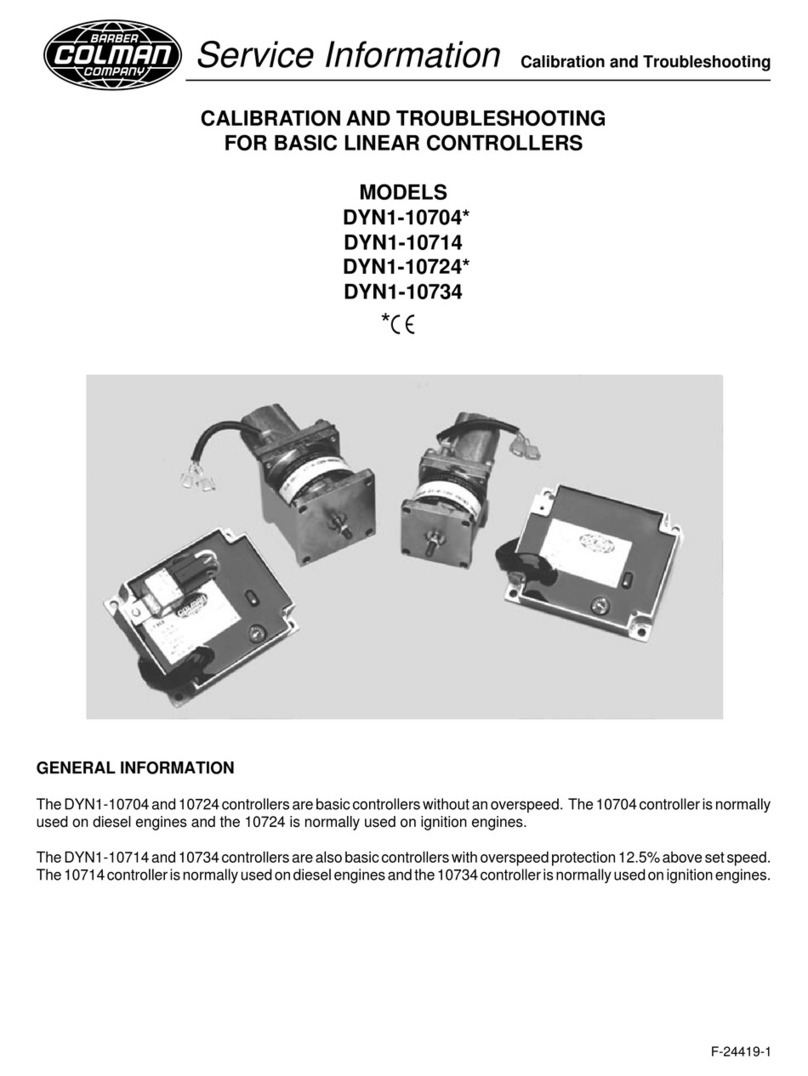
Barber-Colman
Barber-Colman DYN1-10704 Series Service information
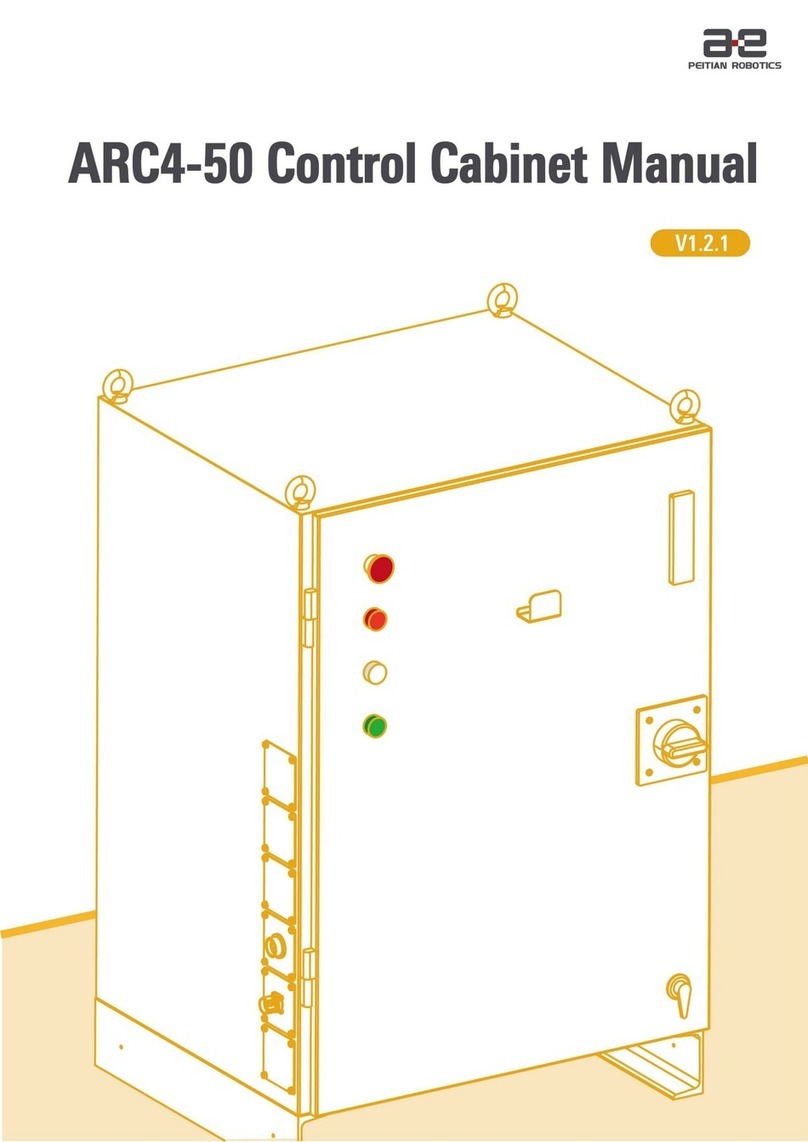
PEITIAN ROBOTICS
PEITIAN ROBOTICS ARC4-50 manual
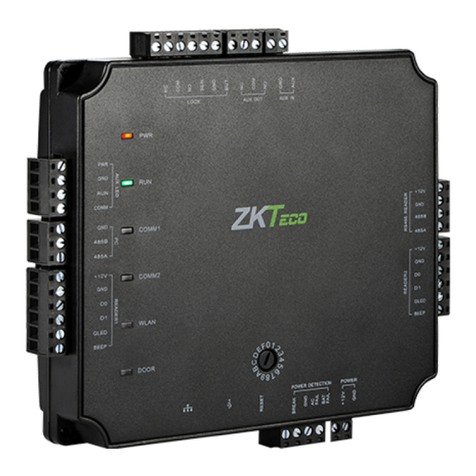
ZKTeco
ZKTeco C5S110 Installation and connection guide
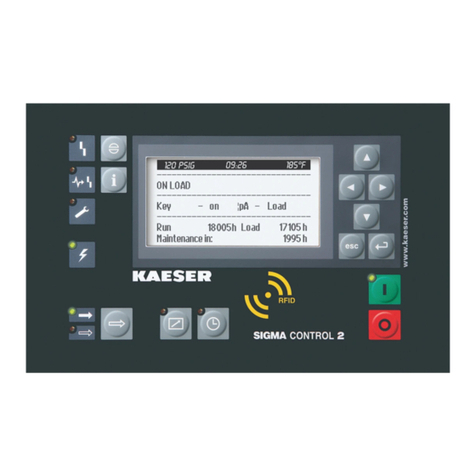
KAESER KOMPRESSOREN
KAESER KOMPRESSOREN SIGMA CONTROL 2 user manual
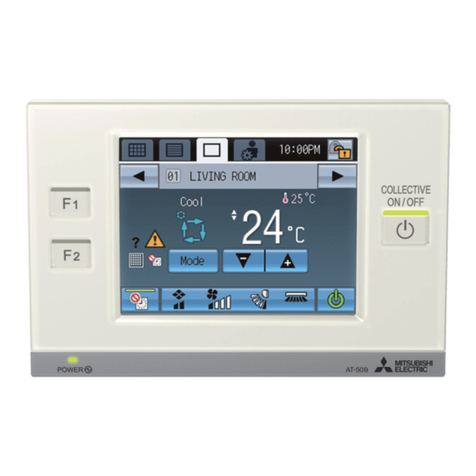
Mitsubishi Electric
Mitsubishi Electric AT-50B installation manual

AUMA
AUMA SGM 04.1 Operation instructions
